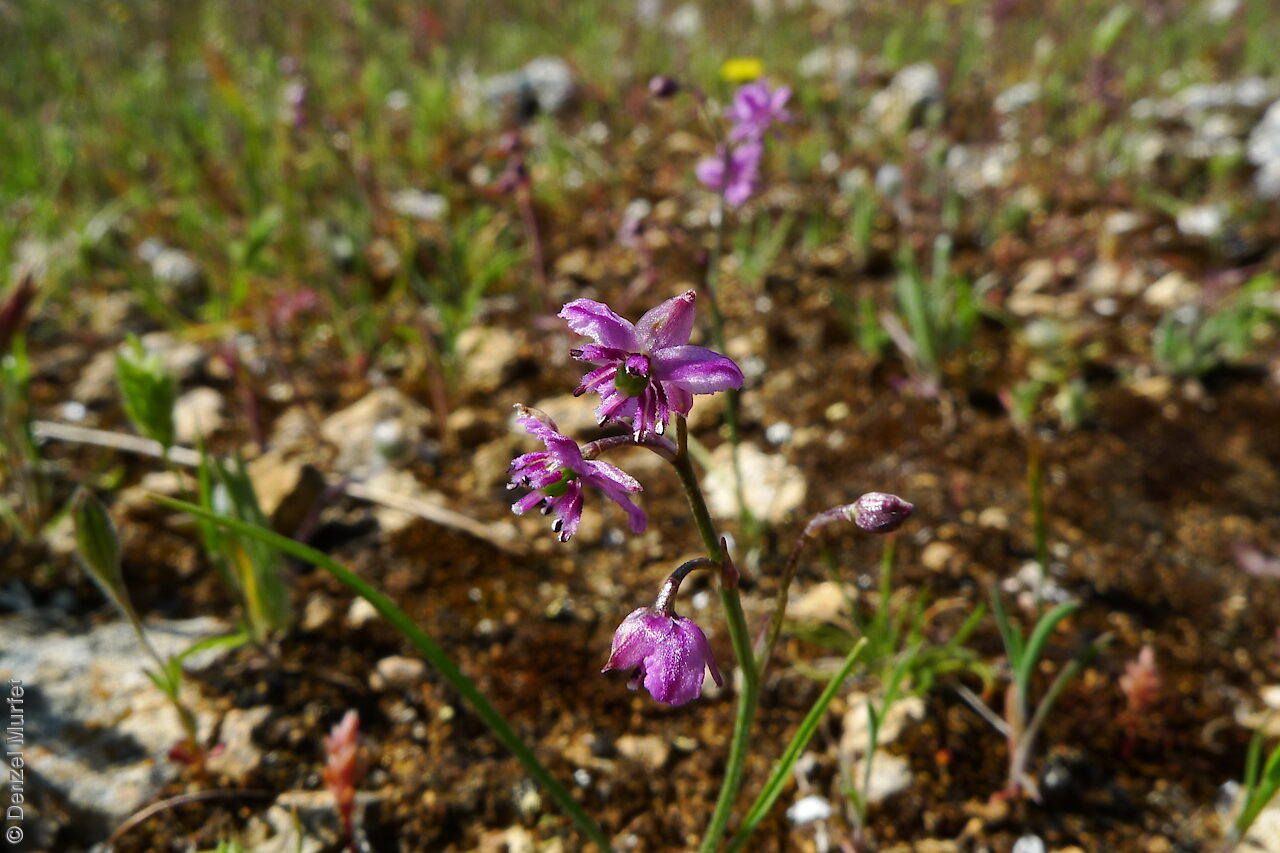

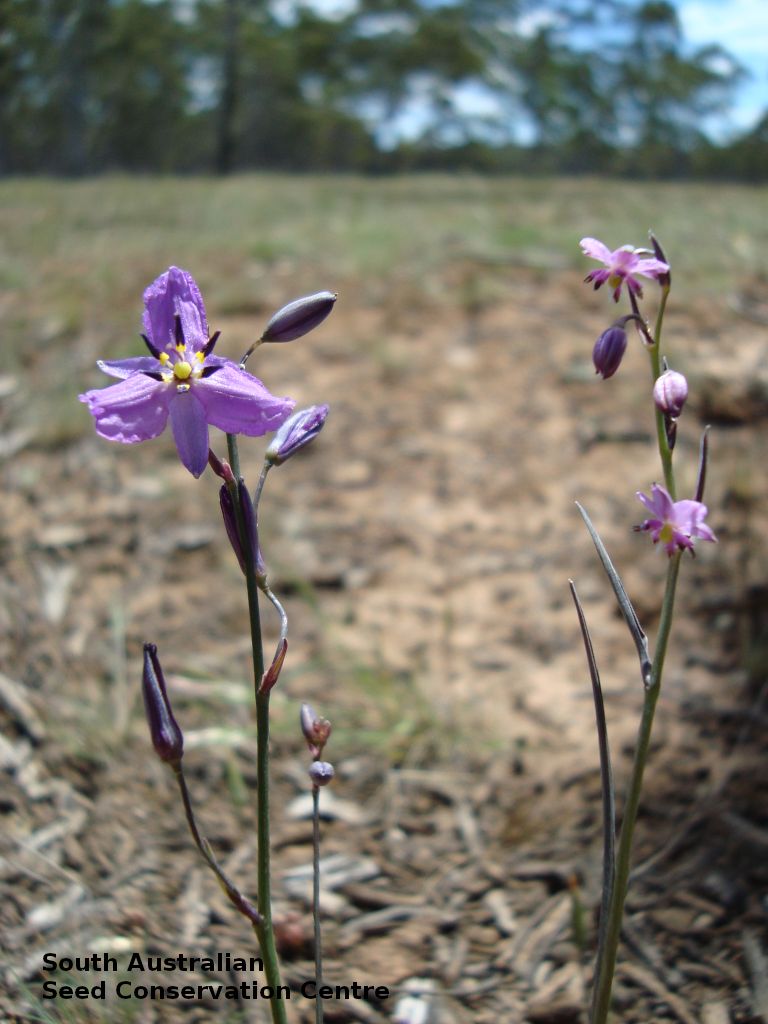
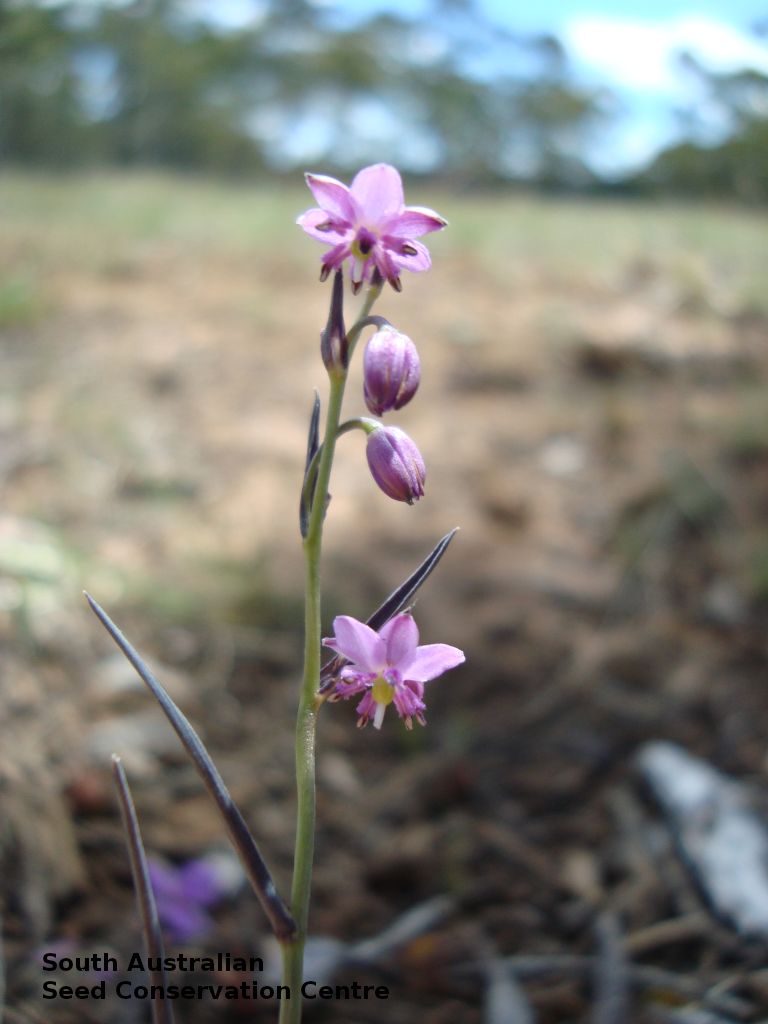
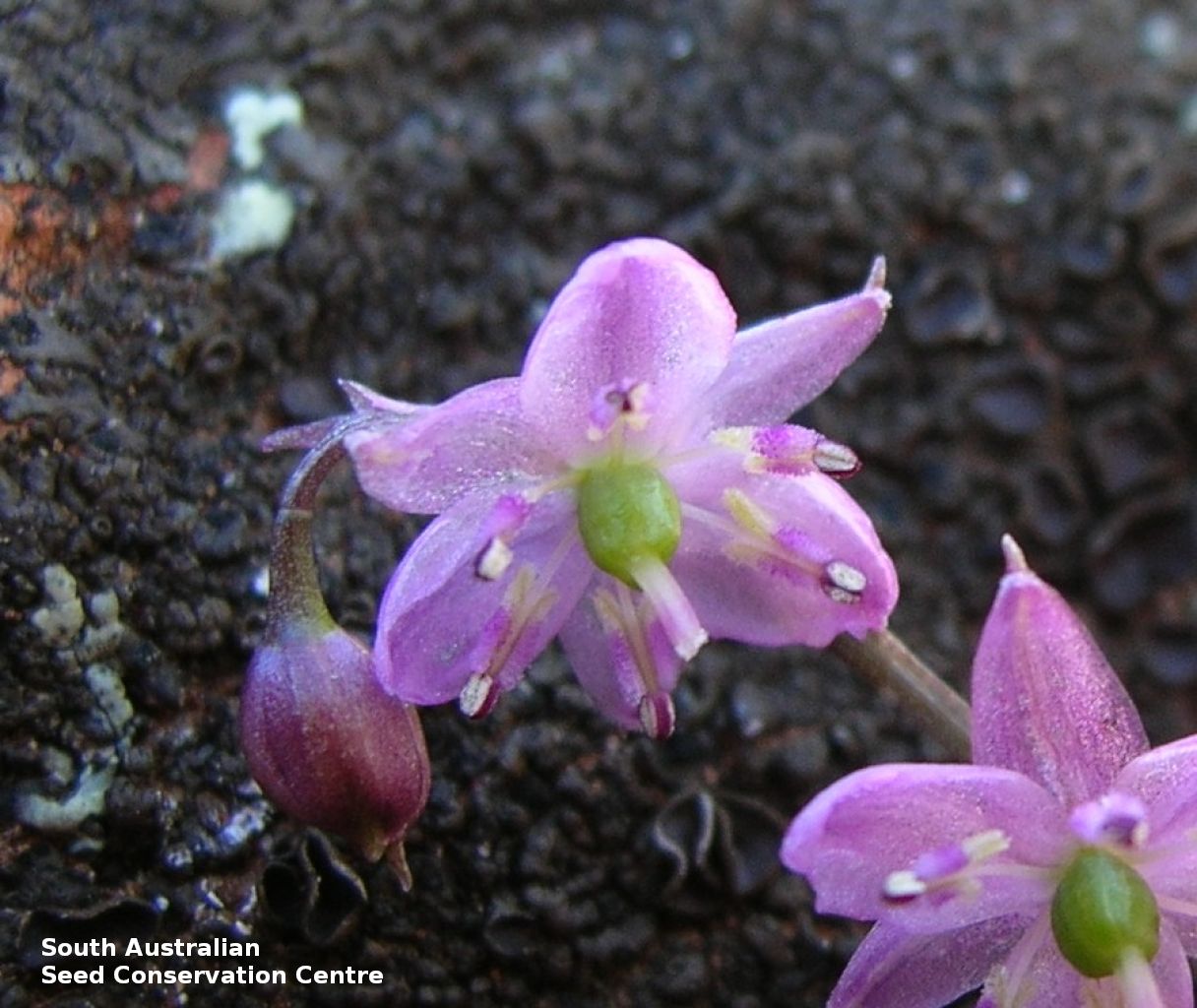
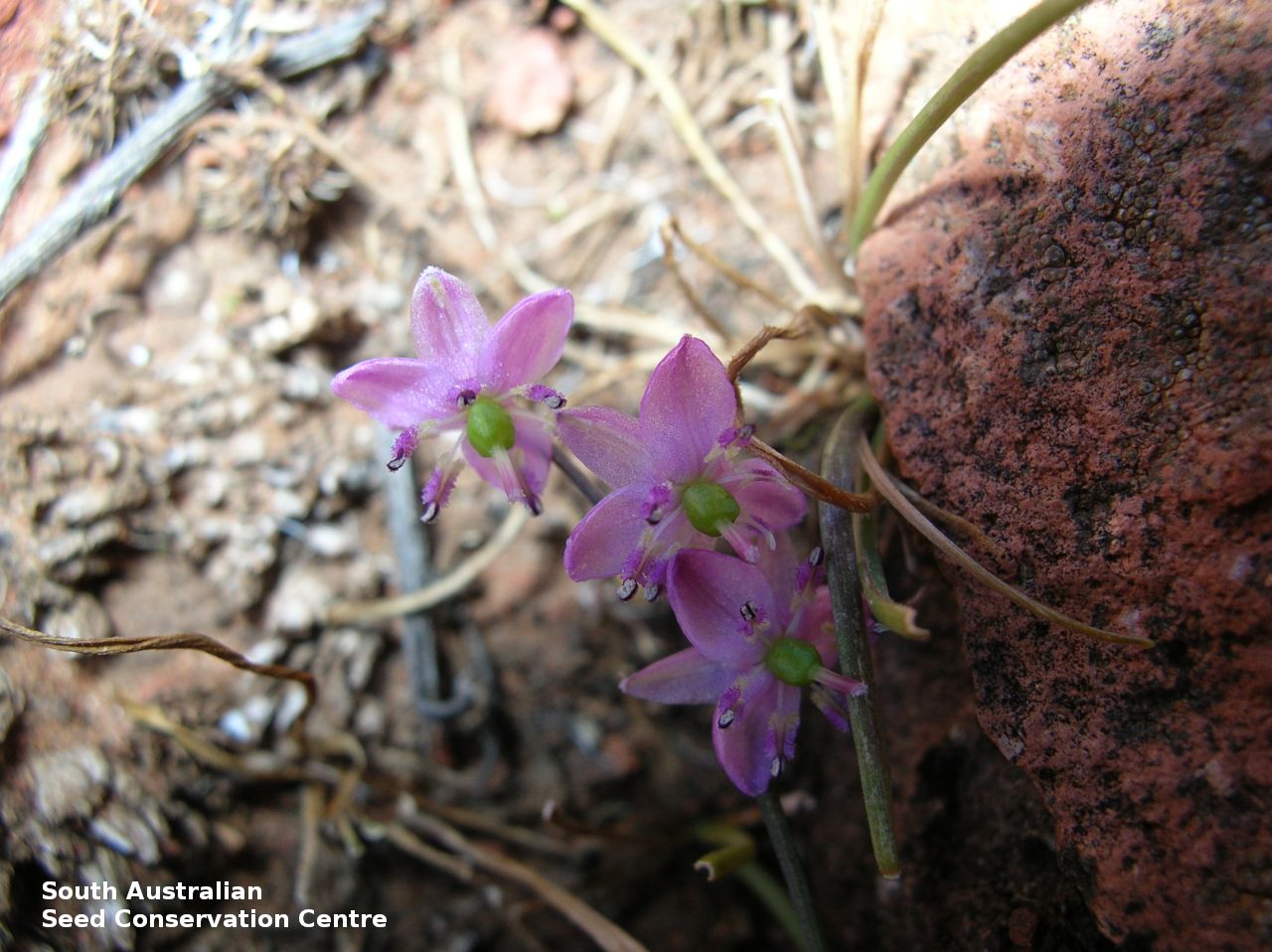
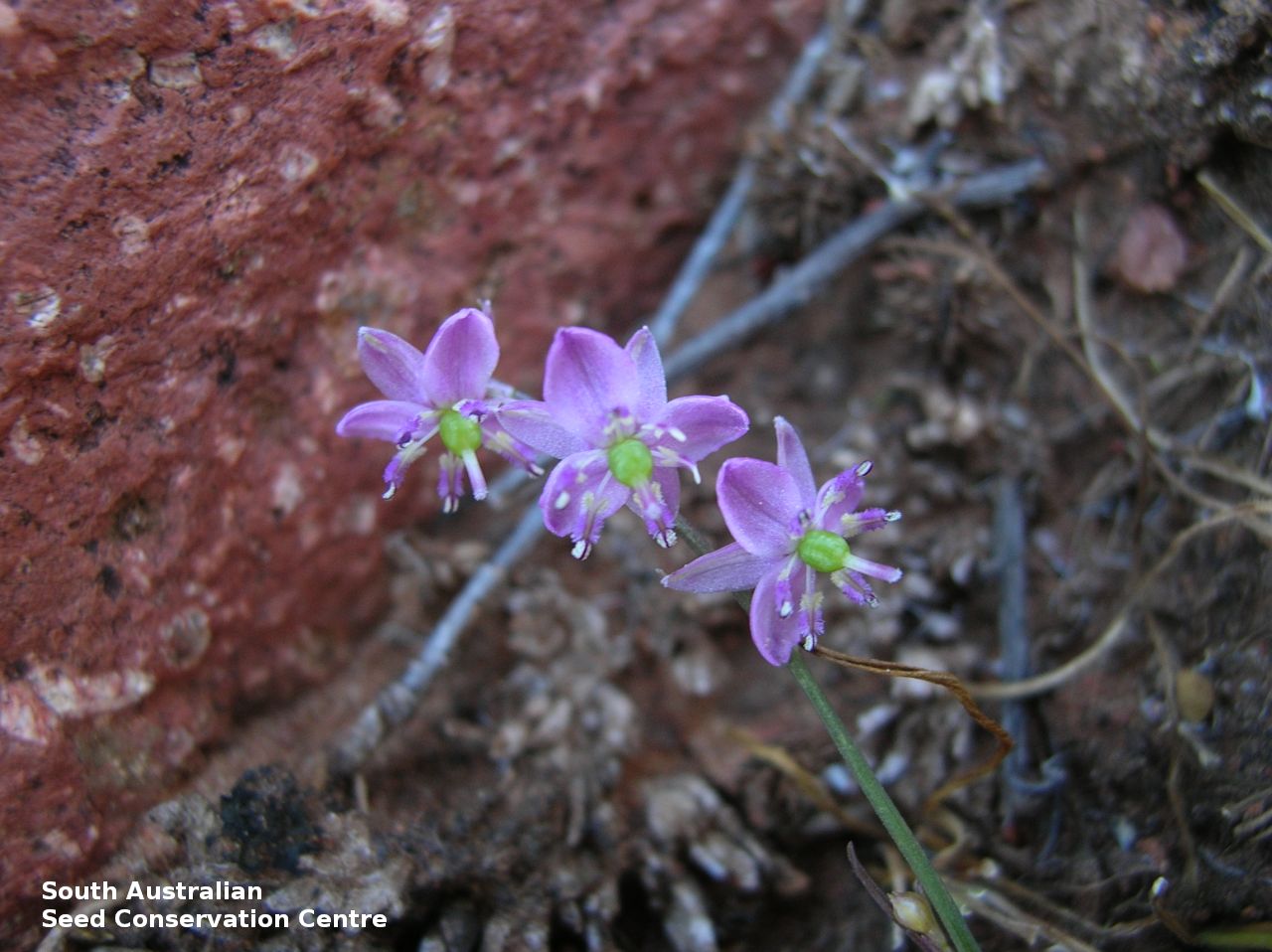
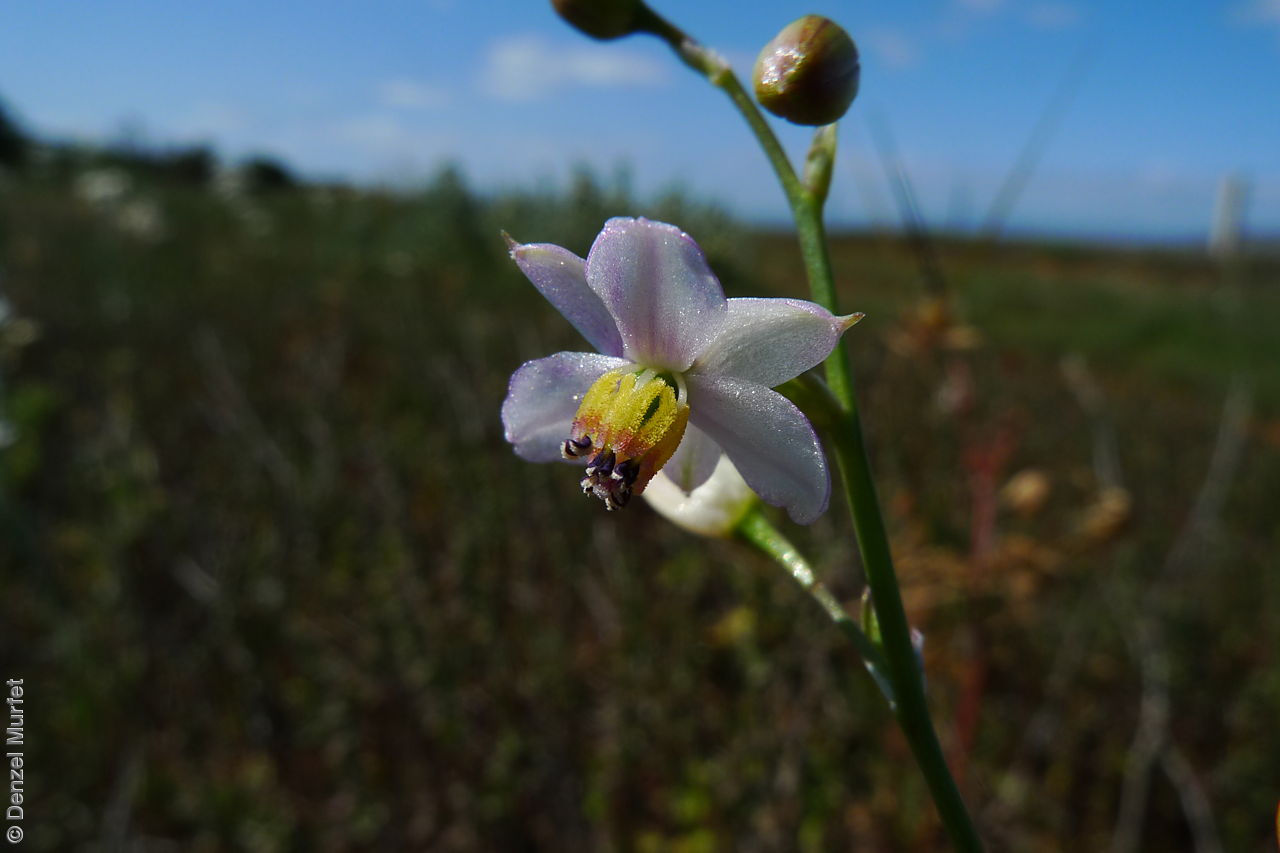
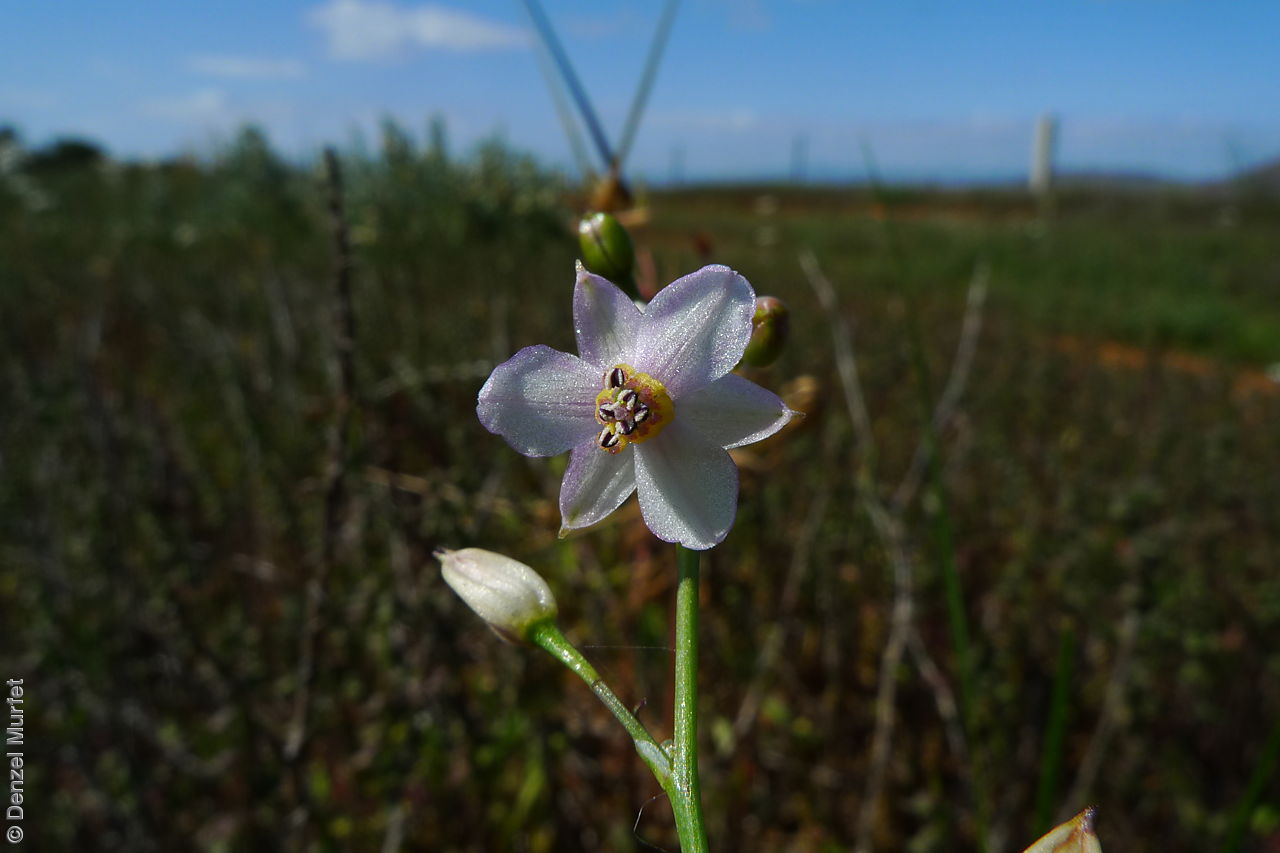
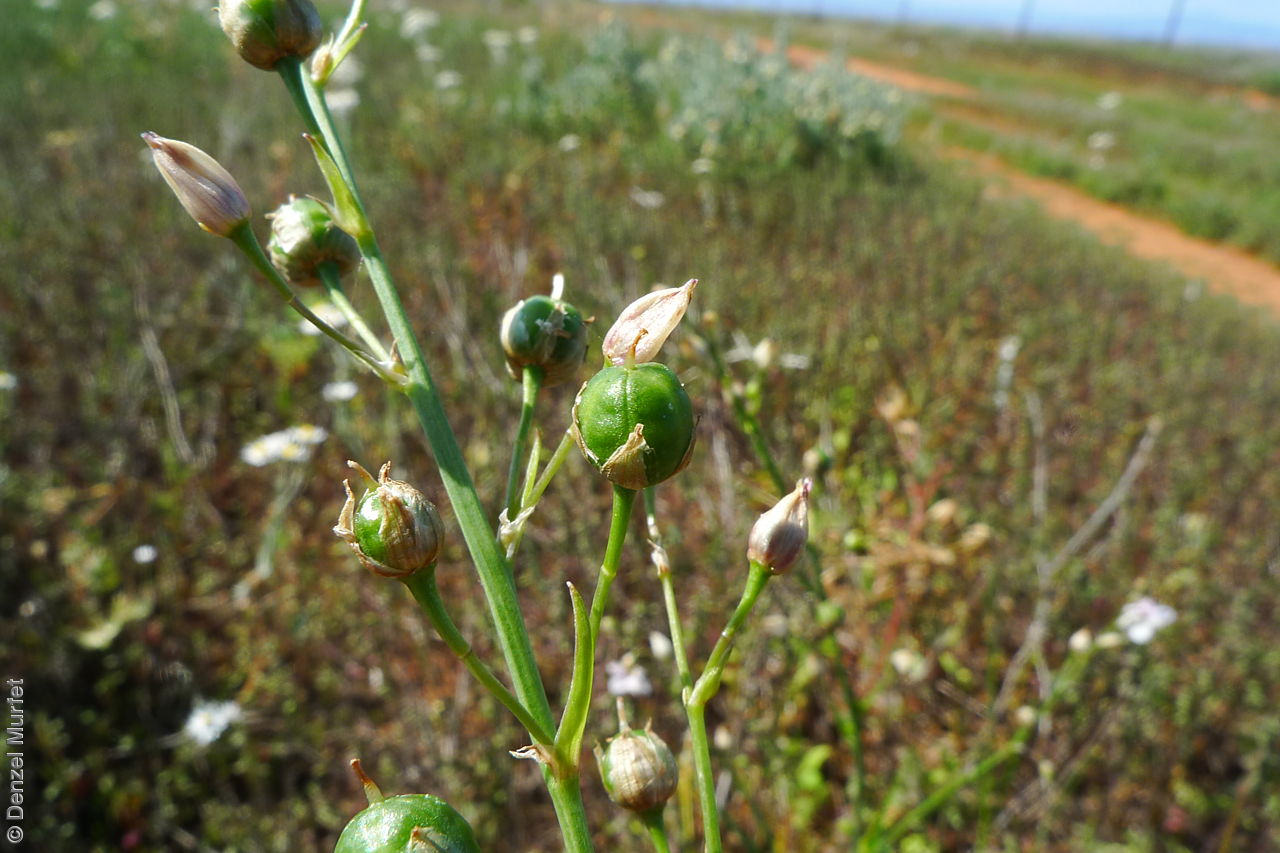
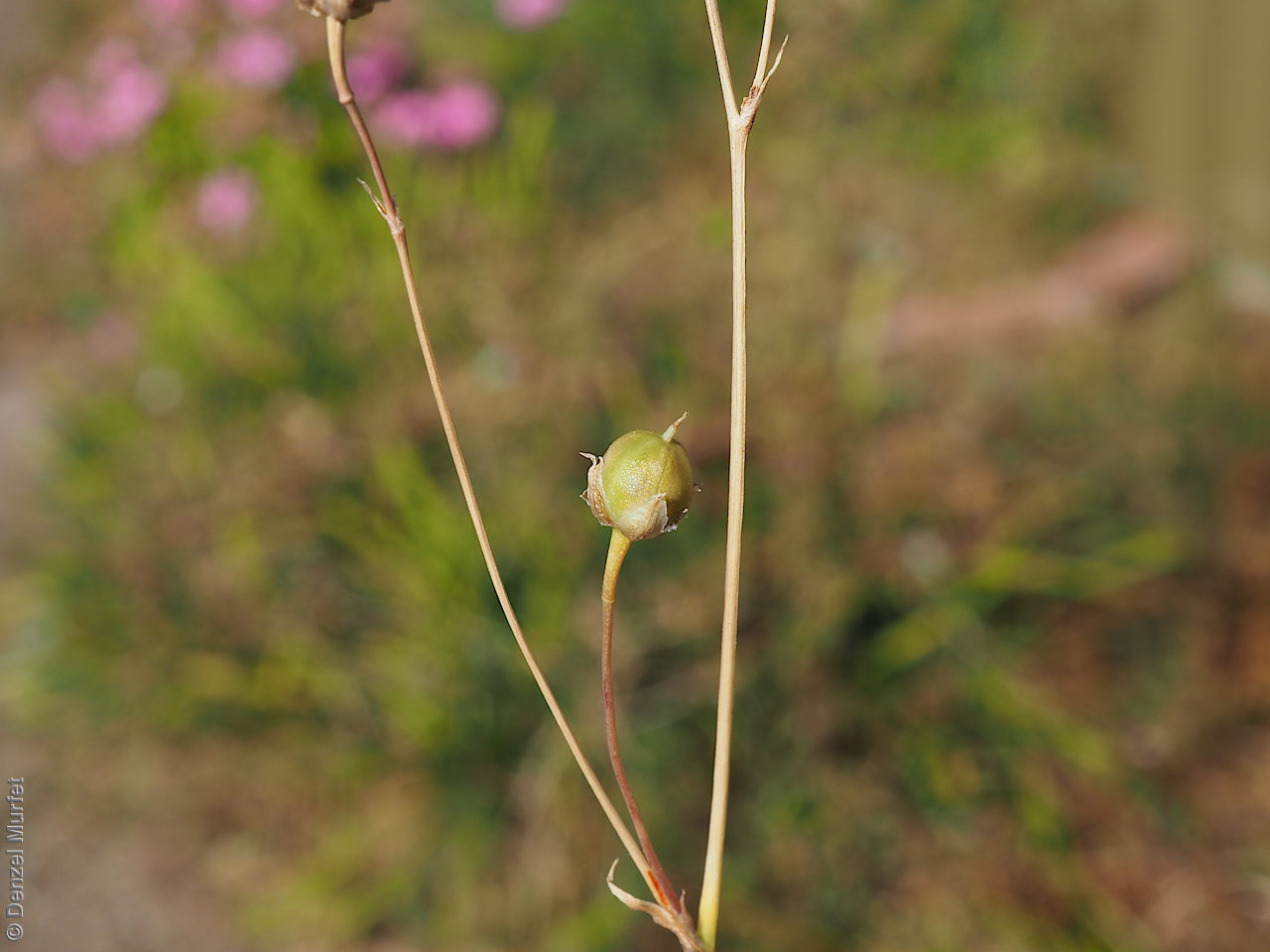
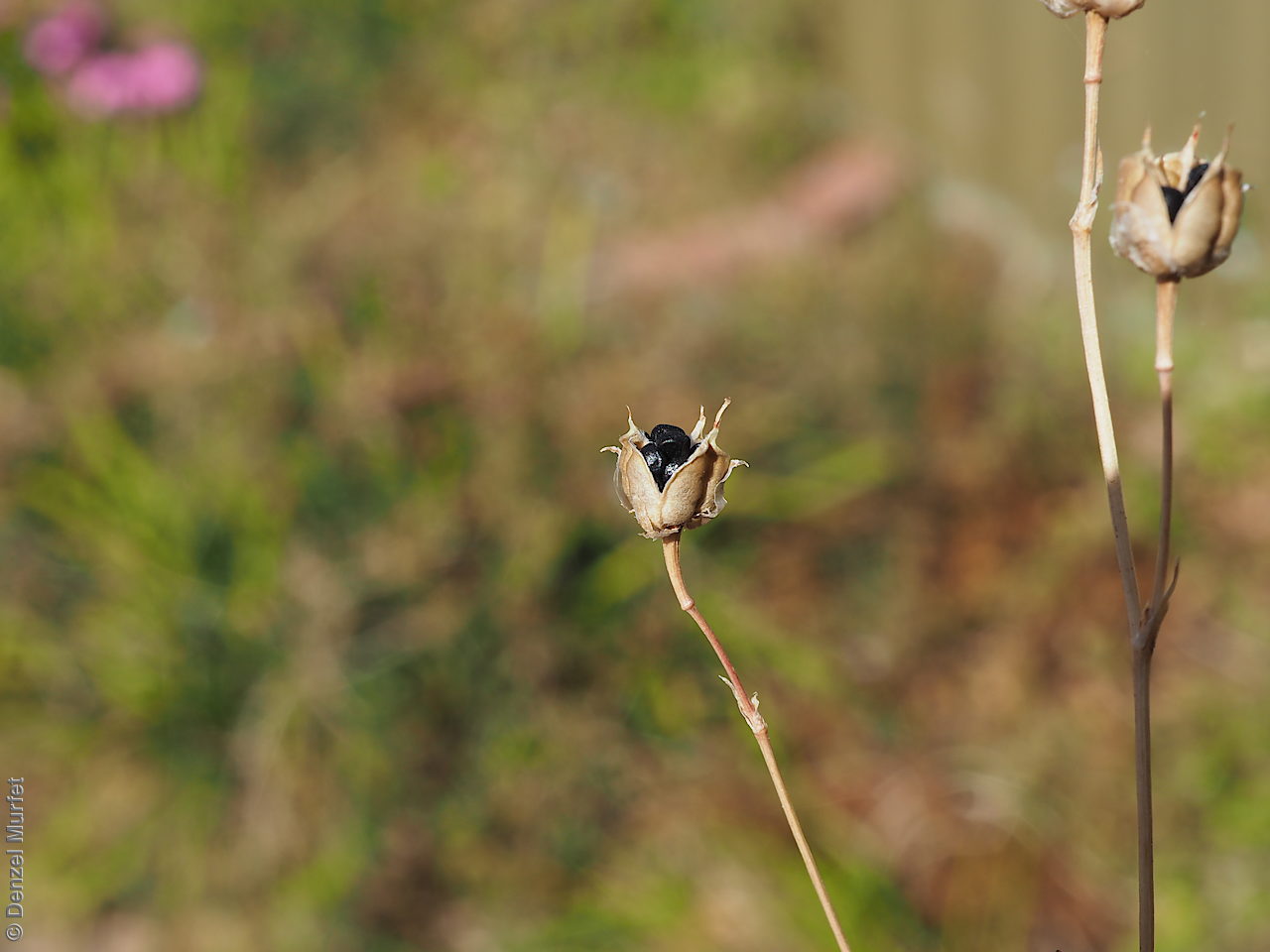
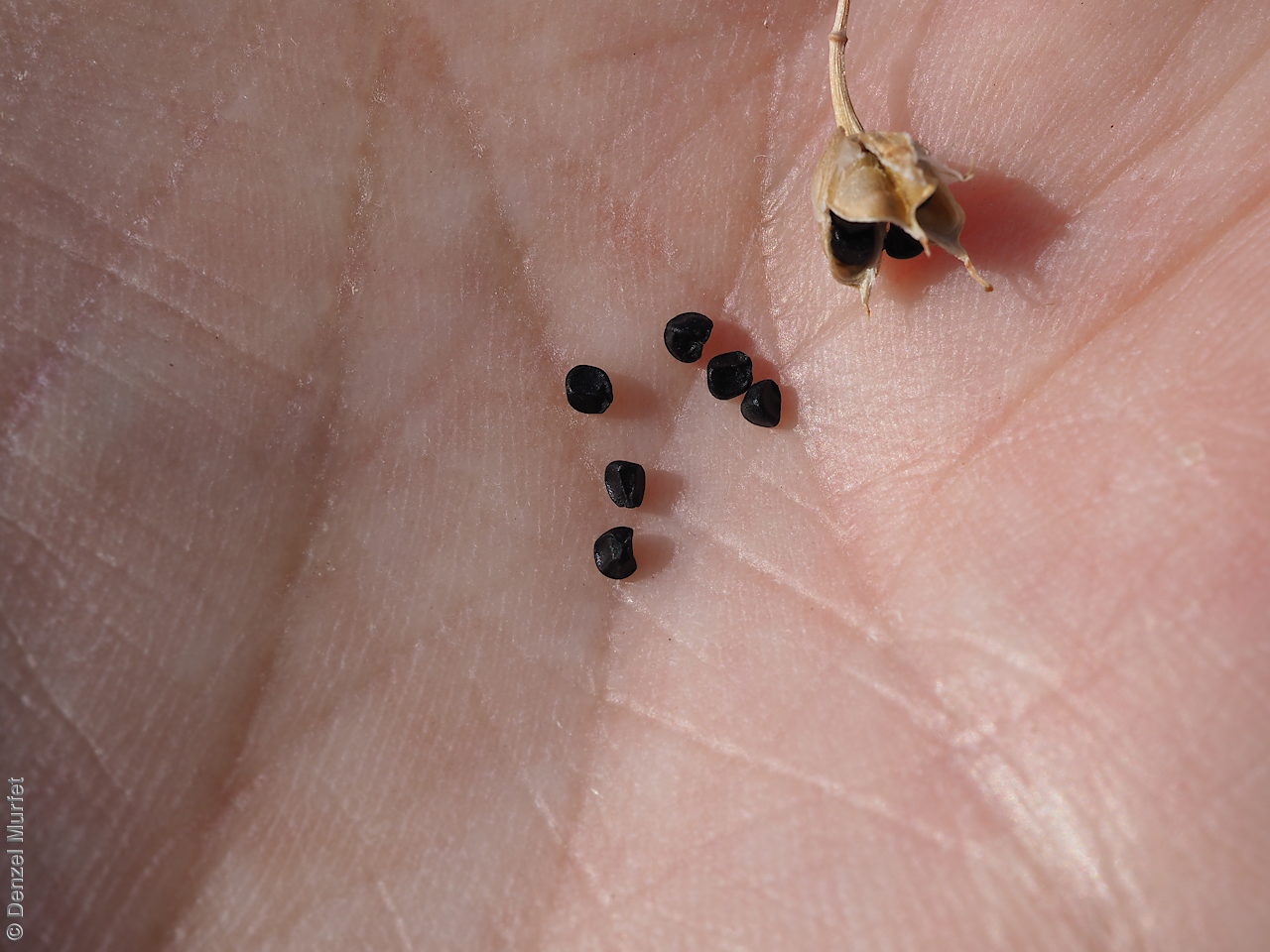

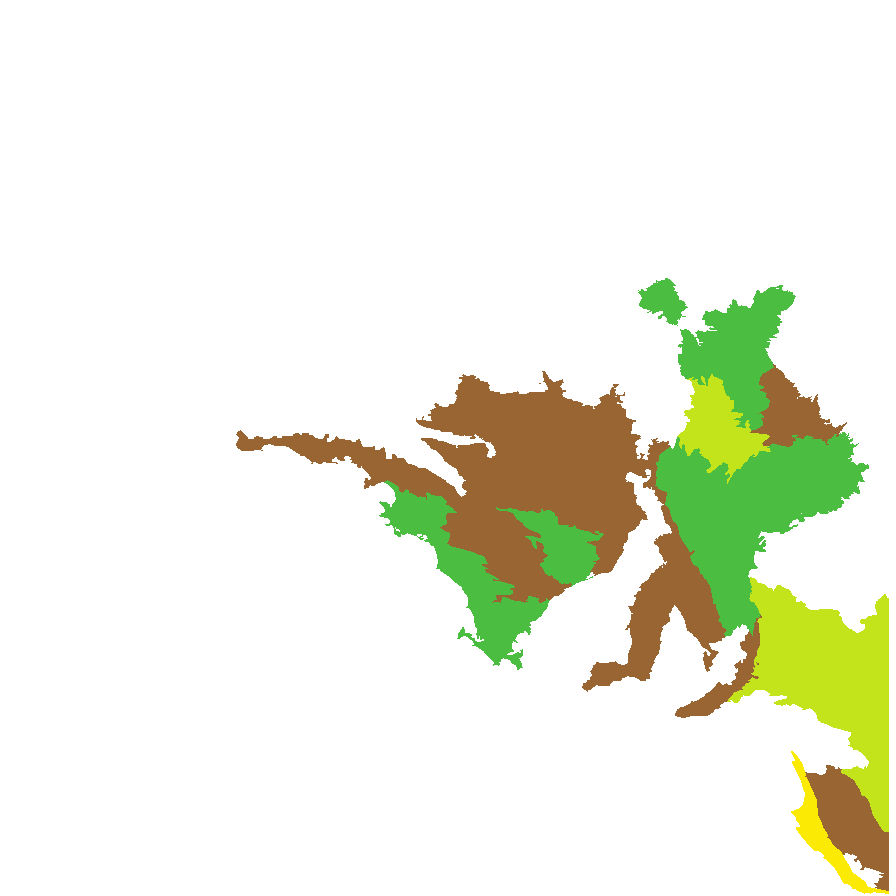
Botanical art
Common names
Small Vanilla-lily
Etymology
Arthropodium from the Greek 'arthron' meaning a joint and 'podion' meaning a little foot, alluding to the jointed pedicels. Minus from Latin meaning small, referring to the species' smaller habit.
Distribution and status
Found in the southern part of South Australia from the Gammon Ranges to the lower South-east, growing in a variety of habitats in woodland and grassland. Also found in Queensland, New South Wales, Victoria and Tasmania. Native. Common in South Australia. Uncommon in Queensland. Common in other States.
Herbarium regions: Gairdner-Torrens, Flinders Ranges, Eastern, Eyre Peninsula, Northern Lofty, Murray, Yorke Peninsula, Southern Lofty, South Eastern
AVH map: SA distribution map (external link)
Plant description
Perennial herb with tubers oblong, close to the rootstock to 2 cm long, and erect, slender stems to 30 cm high. Leaves linear to sublinear to 10 cm long and 3 mm wide. Inflorescence a raceme or a branched panicle often with large leaf-like bracts below the branches, with solitary (less often paired), dropping purple flowers in the axil of each bract, scented, on slender pedicels. Flowering between September and October. Fruits are erect, pale-brown ovoid capsule to 5 mm long containing numerous seeds. Seeds are black, sectoroid or pyramidal seed to 3 mm long, with smooth or slightly wrinkled surface. Seed embryo type is linear fully developed.
Seed collection and propagation
Collect seeds between November and January. Collect mature capsules, those that are turning a pale straw colour and contain black seeds. Can collect individual capsules or break off the whole spike. Place the capsules in a tray and leave to dry for two weeks. Then rub the capsules gently by hand to dislodge the seeds. Use a sieve to separate the unwanted material. Store the seeds with a desiccant such as dried silica beads or dry rice, in an air tight container in a cool and dry place. Seed viability is usually high.